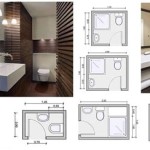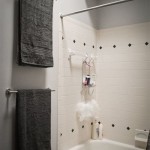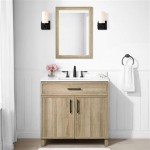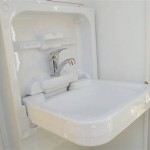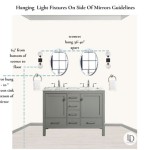Bathroom Vent Fan Installation: Essential for Ceiling Moisture Control
Bathroom vent fans installed in the ceiling are critical components of a modern bathroom. These seemingly simple devices play a significant role in maintaining air quality, preventing moisture damage, and mitigating the growth of mold and mildew. The selection, installation, and maintenance of a bathroom vent fan are crucial to its effectiveness and longevity. This article will delve into the vital aspects of bathroom vent fan installation, focusing on key considerations for ceiling-mounted units.
Bathroom environments are naturally humid due to showers, baths, and sinks. This humidity, if left unchecked, can lead to a variety of problems. Excess moisture condenses on surfaces, creating a breeding ground for mold and mildew, which are detrimental to both health and property value. Furthermore, prolonged exposure to high humidity can damage paint, wallpaper, and even structural elements of the building. A properly installed and functioning bathroom vent fan effectively removes this excess moisture, preventing these detrimental effects.
The primary function of a bathroom vent fan is to exhaust moisture-laden air from the bathroom to the outside. This process not only removes excess humidity but also helps to eliminate unpleasant odors and airborne pollutants, contributing to a healthier and more comfortable environment. The fan's efficacy depends on several factors, including its size (measured in cubic feet per minute or CFM), its placement, and the quality of its installation.
Calculating the Necessary CFM for Effective Ventilation
Determining the appropriate CFM rating for a bathroom vent fan is essential for its optimal performance. A fan that is too small will not adequately remove moisture, while a fan that is excessively large may be unnecessarily noisy and energy-inefficient. The standard method for calculating the required CFM is based on the square footage of the bathroom. This is generally calculated at 1 CFM per square foot of bathroom space. For example, a bathroom measuring 5 feet by 8 feet (40 square feet) would require a fan with a CFM rating of at least 40.
However, this simple calculation is not always sufficient, particularly in bathrooms with high ceilings or those containing a separate toilet room. For ceilings higher than 8 feet, the square footage calculation should be adjusted to account for the increased volume of air. In bathrooms with a separate toilet room, it is often recommended to install a separate vent fan within that space to ensure adequate ventilation. Additionally, bathrooms that are frequently used by multiple occupants simultaneously may require a higher CFM rating to handle the increased moisture load.
Specialized bathroom features such as whirlpool tubs or steam showers necessitate a significantly higher CFM rating. For whirlpool tubs, an additional 50 CFM is often required, while steam showers may require as much as 100 CFM or more, depending on the size and frequency of use. Consulting with a qualified HVAC professional is recommended in these situations to determine the optimal CFM rating for the specific installation. Beyond just the CFM rating, one must also consider the noise level of the fan. Noise level is measured in sones and it is recommended to select a fan with a lower sone rating for quiet operation.
Key Considerations for Ceiling Installation
Ceiling installation of a bathroom vent fan presents its own unique set of challenges and considerations. The installation process typically involves cutting an opening in the ceiling, wiring the fan to an electrical circuit, and connecting the fan to ductwork that leads to an exterior vent. Proper planning and execution are critical to ensure a safe and effective installation.
Before commencing any installation work, it is imperative to consult with local building codes and regulations. These codes often specify requirements for vent fan installation, including the type of wiring that must be used, the placement of the exterior vent, and the type of ductwork that is permitted. Failure to comply with these codes can result in fines or the need to redo the installation.
Safety is paramount during the installation process. It is essential to turn off the power to the circuit that will be used to power the fan. A non-contact voltage tester should be used to verify that the circuit is de-energized before any wiring is performed. Personal protective equipment, such as safety glasses and gloves, should be worn to protect against dust, debris, and electrical hazards. When drilling or cutting into the ceiling, it is essential to avoid any existing wiring or plumbing. Using a stud finder and carefully examining the area before cutting can help to prevent accidental damage.
The location of the fan within the bathroom ceiling is also a crucial consideration. Ideally, the fan should be located near the primary source of moisture, such as the shower or bathtub. This helps to ensure that the fan effectively captures and removes the humid air before it has a chance to spread throughout the bathroom. The fan should also be positioned in a location that allows for easy access for future maintenance and repairs.
Proper ductwork is essential for the efficient operation of a bathroom vent fan. The ductwork should be sized appropriately for the CFM rating of the fan and should be as short and straight as possible to minimize airflow resistance. Flexible ductwork is often used for bathroom vent fan installations due to its ease of installation, but rigid ductwork is generally preferred for its superior airflow characteristics. The ductwork should be securely connected to the fan and the exterior vent to prevent air leaks. All seams and joints should be sealed with duct tape or mastic to ensure a tight seal.
The exterior vent is a critical component of the vent fan system. It should be located in a place that prevents the re-entry of moist air back into the bathroom or other parts of the building. The vent should also be equipped with a backdraft damper to prevent outside air from entering the building when the fan is not in operation. The vent should be securely attached to the exterior wall or roof and should be properly sealed to prevent water intrusion.
Ensuring Proper Ventilation and Avoiding Common Installation Errors
Several common errors can undermine the effectiveness of a bathroom vent fan installation. One of the most frequent mistakes is venting the fan into the attic instead of to the outside. This practice can lead to moisture buildup in the attic, which can cause mold growth, rot, and other structural damage. It is essential to ensure that the ductwork is properly routed to an exterior vent.
Another common error is using undersized ductwork. This restriction can significantly reduce the airflow of the fan, rendering it less effective at removing moisture. The ductwork should be sized appropriately for the CFM rating of the fan, as specified by the manufacturer. Using a flex duct run that is too long or has multiple bends can also reduce the effectiveness of the fan. Always aim for a straight, short run where possible.
Improper wiring is another significant concern. It is essential to use the correct gauge of wire and to make secure connections to prevent electrical hazards. If one is not comfortable working with electrical wiring, it is recommended to hire a qualified electrician to perform the wiring. Grounding the fan appropriately is extremely important for safety. Ensure the fan and all wiring are properly grounded according to local electrical codes.
Insufficient sealing of the fan housing to the ceiling can also lead to problems. Gaps around the fan housing can allow moist air to leak into the ceiling cavity, negating the benefits of the fan. The fan housing should be securely attached to the ceiling joists and sealed with caulk or foam to prevent air leaks. Any holes or opening around the fan housing should be properly sealed.
Regular maintenance is essential to ensure the continued proper operation of a bathroom vent fan. The fan should be cleaned periodically to remove dust and debris that can accumulate on the fan blades and motor. This can be done by turning off the power to the fan and using a brush or vacuum cleaner to remove the debris. The exterior vent should also be inspected regularly to ensure that it is free from obstructions, such as leaves or bird nests. The backdraft damper should also be checked to ensure that it is functioning properly. If any problems are detected, such as excessive noise or reduced airflow, the fan should be repaired or replaced promptly.
In addition to basic functionality, many modern bathroom vent fans offer advanced features such as humidity sensors. Humidity sensors automatically activate the fan when the humidity level in the bathroom reaches a certain threshold, ensuring that moisture is removed even when the fan is not manually switched on. Some fans also include timers that allow the fan to run for a set period after the light switch is turned off, ensuring that all residual moisture is removed. Integrated lights and heaters are also available, providing additional convenience and functionality. The installation process can be more complex for fans with these advanced features, so it is essential to carefully review the manufacturer's instructions.
Selecting the right bathroom vent fan and ensuring its proper installation are investments in the long-term health and value of the home. By understanding the key considerations outlined in this article, homeowners can make informed decisions about their bathroom ventilation needs and ensure that their vent fan is installed correctly and functioning optimally. Ignoring these basic principles can lead to costly repairs and health problems down the road.

Quick Tip 23 Fixing A Drip At The Bathroom Fan Misterfix It Com

Why Does My Bathroom Ceiling Fan Drip Foothills Roofing Calgary

Best Practices Bathroom Venting Greenbuildingadvisor

How To Install A Bathroom Fan Roof Vent Comprehensive Guide Kyinbridges Com

How To Use An In Line Exhaust Fan Vent Two Bathrooms Diy Family Handyman

Is This Bathroom Vent Ed Up Greenbuildingadvisor

Bathroom Exhaust Fan Ultra Quiet 1 0 Sones Ceiling Vent With 3 Adjustable Colors Lights 110 Cfm Bath Ventilation Light Combo Fits For Home Office Hotel 105 Sq Ft Com

Bathroom Exhaust Fan Guide

How To Clean Bathroom Ceiling Fans Simple Method

Poorly Installed Bath Fan Vents Can Cause Serious Problems Orange County Register
